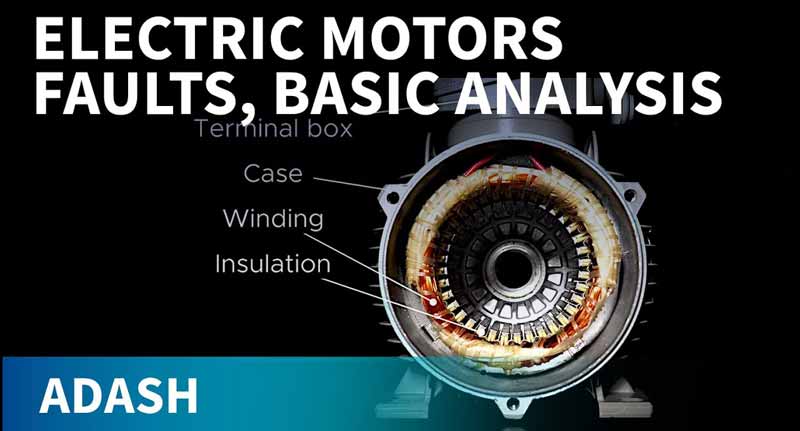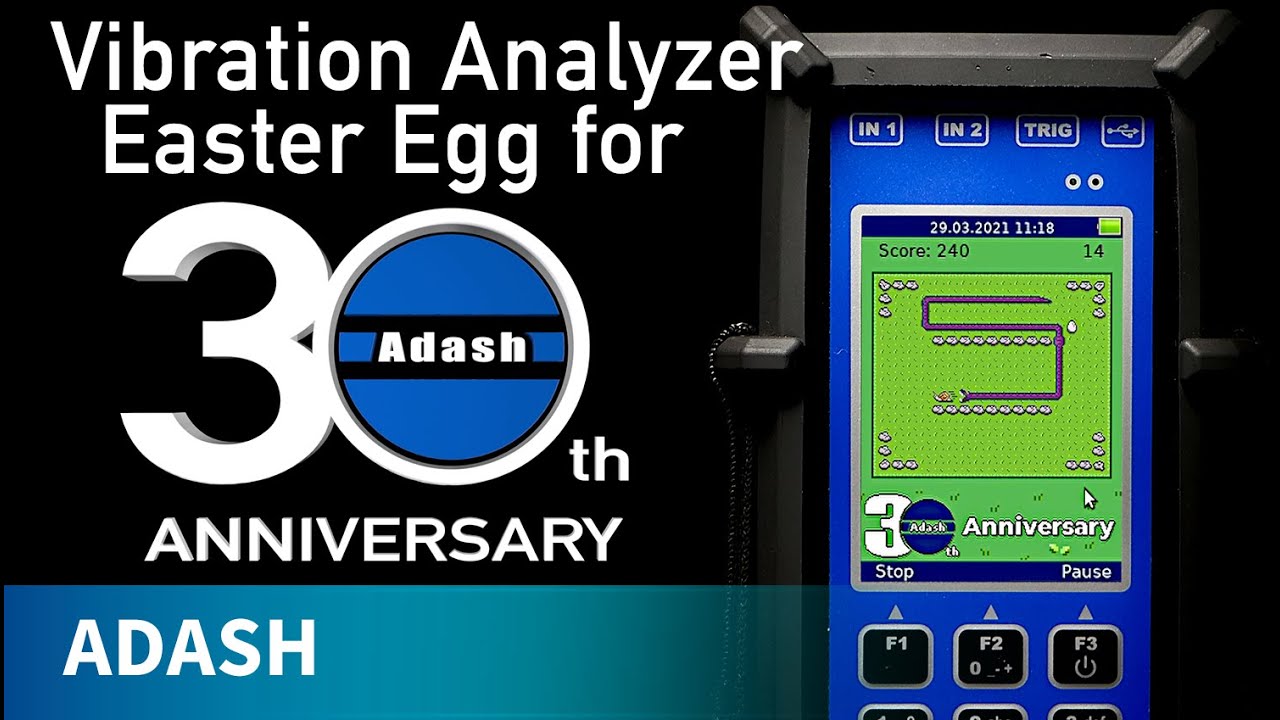Análisis de rodamientos: Principio y rarezas de la demodulación de señal.
11.03.2021
En este video explicaremos la demodulación de la señal de vibración para el análisis de rodamientos y explicaremos algunas características extrañas de la demodulación.
Hablaremos sobre la medición del estado de los rodamientos. Generalmente se basa en el análisis de la frecuencia de fallas. ¿Cuál es la frecuencia de fallas?
Supongamos que hay picaduras en la pista exterior. Cada bola que pasa por las picaduras provoca un breve choque de vibración.
Supongamos que solo existe una grieta en la pista exterior. Según la frecuencia de velocidad, obtenemos el intervalo de tiempo T entre choques.
Es el tiempo de repetición entre choques. En nuestro ejemplo, T es igual a 0,1 segundos.
El valor igual a uno dividido por T es la frecuencia de repetición de las descargas. Esta frecuencia la etiquetamos como frecuencia de falla. En este ejemplo, es la frecuencia de falla de la pista exterior.
Los usuarios a menudo piensan que el acelerómetro debe medir la frecuencia de falla, que puede ser muy baja. Absolutamente no, es un gran error. Este espectro no contiene los picos de frecuencia de falla.
Ahora sabemos que el espectro no es una buena herramienta para el análisis de frecuencia de falla, porque no son visibles en el espectro normal.
Una herramienta mucho mejor es el espectro de demodulación, que nos muestra la frecuencia de falla. Además, los armónicos se muestran debido a la distorsión de la señal. No es una onda sinusoidal pura, por eso vemos armónicos. Pero no importa. Podemos ver la frecuencia de falla claramente.
Describamos brevemente el proceso de demodulación. Al principio medimos la señal de tiempo en un rango de alta frecuencia. Normalmente, 25 kHz. ¿Se preguntarán por qué? Después de todo, la frecuencia de falla es muy baja. Sí, es cierto. Pero repito una vez más, no medimos la frecuencia de falla. Medimos choques. Y los choques contienen frecuencias muy altas. Normalmente, entre 500 Hz y 25 kHz.
La señal bruta inicial también contiene la frecuencia de velocidad y los armónicos. No nos interesan. Por eso, en primer lugar, utilizamos el filtrado de demodulación.
Puedes configurarlo en cualquier frecuencia específica, pero el paso de banda de 500 Hz a 25 kHz siempre funciona para máquinas estándar. Para máquinas pesadas de baja velocidad, deberías utilizar, por ejemplo, 100 Hz en lugar de 500 Hz.
La señal filtrada contiene solo choques y está lista para la demodulación.
Si queremos ver frecuencias de falla en el espectro, debemos sumar la energía a cada choque y cambiar la forma de los choques. La forma original es demasiado variable. La FFT no es sensible a esa forma. Y la FFT funciona con la energía de la señal, no con los valores pico.
Para eso, utilizamos el proceso de envolvente. Añade energía y cambia la forma.
Puedes imaginar la envolvente como un circuito eléctrico simple. La descarga llega y carga el condensador C. Luego, el condensador se descarga a través de la resistencia R.
La descarga es mucho más larga que la duración de la descarga original.
Y ahora es el momento de aplicar el espectro.
A este espectro lo llamamos espectro de demodulación. Podemos ver claramente la frecuencia de falla con armónicos.
Supongamos que el rodamiento tiene una grieta en la pista exterior.
El intervalo de tiempo entre choques es de 0,1 segundos y corresponde exactamente a una frecuencia de falla de 10 Hz.
Podemos ver la amplitud de 10 Hz y los armónicos. Defino el cursor delta de 5 a 95 Hz para obtener la suma RMS de 10 Hz y todos los armónicos.
Este valor RMS delta es 0,27 g.
Ahora estamos aumentando la cantidad de grietas. Significa que la condición del cojinete es peor. Pero observe la tendencia del cursor delta. Debería aumentar claramente. Pero no lo hace. Cuando analizamos esta tendencia, probablemente digamos que la condición es estable. Intento explicar este comportamiento extraño.
La primera señal de tiempo envolvente se tomó del cojinete con una grieta. El rango de la señal es de cero a 2,05 g. Esto significa que el valor pico de CA es de 2,05 g.
La señal de tiempo envolvente de segundo se tomó de un cojinete con cincuenta grietas. El rango de la señal es de 1,1 a 2,2 g.
Esto significa que el valor pico de CA es de solo 1,1 g.
Es menor que el caso de una grieta. Y ese es el truco. El aumento de la cantidad de grietas puede reducir las amplitudes de las frecuencias de falla y los armónicos.
Cuando analizamos la frecuencia de falla y los armónicos en los espectros de demodulación, pasamos por alto por completo el valor de CC en la línea cero. Fue un error. La tendencia de CC es una buena herramienta. Si el espectro de demodulación muestra la frecuencia de falla, es solo la evidencia de que algo sucedió en la pista exterior, por ejemplo. Pero su amplitud de CA no es una herramienta perfecta para la evaluación de la condición.
Desafortunadamente, muchos analizadores eliminan varias primeras líneas del espectro y las establecen en cero. Es inaceptable. Destruyen información importante en el espectro. Por supuesto, los instrumentos Adash no lo hacen.
Los instrumentos Adash ofrecen una herramienta muy buena para evitar esta situación. Es un valor general demodulado. Funciona desde 0 Hz. Esto significa que la parte de CC está incluida en el cálculo.
Puedes ver que funciona perfectamente. La condición del rodamiento es cada vez peor y los valores son cada vez más grandes. Y eso es lo que esperamos.
00:00 - 05:32 Explicación de la demodulación de la señal de vibración
05:32 - 09:59 Desmodulación extraña de frecuencias de fallas de cojinetes





